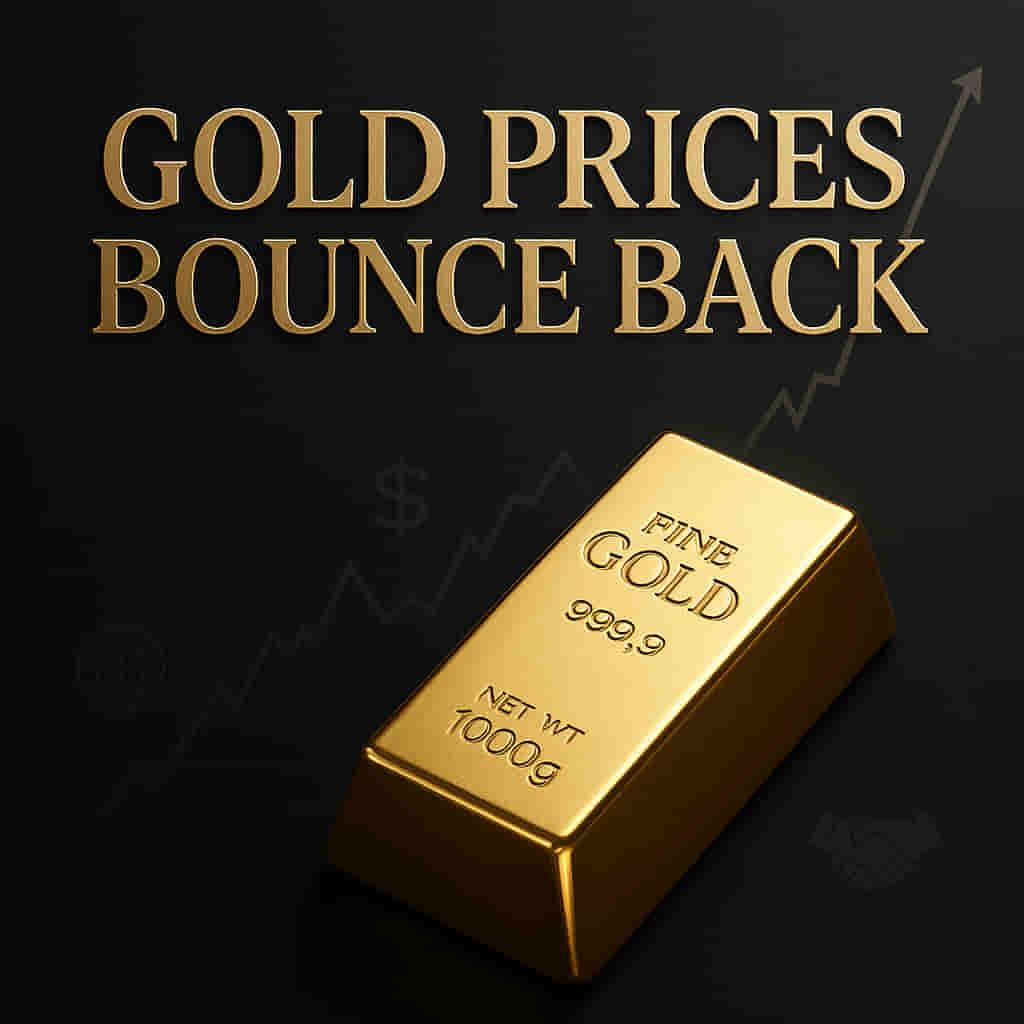Gold Prices Climb on Bargain Hunting Amid Lingering Geopolitical Concerns
Commodities
|
31st October 2025, 8:20 AM

▶
Short Description :
Detailed Coverage :
Spot gold prices increased around 2% to $4,007 on October 30, with the MCX December gold contract also rising 0.60% to ₹121,393. This rebound followed a recent weekly loss of 3.29%.
The US and China reached a trade deal on October 29, involving tariff reductions and a truce extension. However, significant underlying issues remain unresolved, suggesting this may be a temporary relief.
Key central bank actions influenced the market: The US Federal Reserve cut its policy rate by 25 basis points to a range of 3.75%-4% and announced an end to asset runoff starting December. Despite this, hawkish dissent from some officials and cautious remarks from Fed Chair Powell about data availability due to the US government shutdown put pressure on commodities, strengthening the US Dollar and boosting yields.
The Bank of Canada also cut its interest rate by 25 basis points to 2.25%. The European Central Bank, however, kept its key interest rates unchanged.
These monetary policy shifts led to a stronger US Dollar Index and rising US Treasury yields, typically a bearish signal for gold.
Globally, gold demand reached a record high of 1,313 tonnes in the third quarter, driven by investment in uncertain geopolitical times. Central banks continued their buying spree, adding 220 tonnes in Q3 and significant amounts year-to-date.
Despite short-term volatility expected from digesting these policy decisions and trade deal nuances, the US Federal Reserve cutting rates into elevated inflation is viewed as a positive long-term factor for gold. Potential resistance is seen at $4,160, with support at $3,885/$3,820.
Impact Rating: 8/10
Difficult Terms: Spot gold: The price of gold for immediate delivery. MCX December gold contract: A futures contract for gold trading on the Multi Commodity Exchange of India, expiring in December. Bargain hunting: Buying an asset when its price has fallen significantly, expecting it to rebound. Geopolitical uncertainty: Instability arising from international relations and potential conflicts. Fentanyl tariffs: Tariffs imposed on the import/export of fentanyl, a synthetic opioid. Reciprocal tariffs: Taxes imposed by one country on goods from another, which are matched by similar taxes from the second country. Industrial subsidies: Financial aid provided by a government to domestic industries. Respite: A short period of rest or relief from something difficult or unpleasant. Fed Fund rate: The target rate set by the US Federal Reserve for overnight lending between banks. bps (basis points): One basis point is 1/100th of a percent (0.01%). Federal Open Market Committee (FOMC): The monetary policymaking body of the US Federal Reserve. Hawkish: An economic policy stance favouring higher interest rates to control inflation, even if it slows economic growth. Dissent: Disagreement with a majority decision. Asset runoff: The process by which a central bank reduces its holdings of securities, effectively shrinking its balance sheet. Fed Chair Powell: Jerome Powell, the current Chair of the Board of Governors of the US Federal Reserve System. Monetary policy: Actions undertaken by a central bank to manipulate the money supply and credit conditions to stimulate or restrain economic activity. Hawkish surprise: An unexpected monetary policy decision that is tighter than anticipated (e.g., raising rates or signalling fewer cuts). US Dollar Index: A measure of the value of the U.S. dollar relative to the value of a basket of the world's major currencies. Yields: The income return on an investment, often referring to government bonds. COMEX: Commodity Exchange Inc., a subsidiary of CME Group, a major futures exchange. MOz (Million Ounces): A unit of measurement for precious metals, specifically millions of troy ounces. YTD (Year-to-date): The period from the beginning of the current year up to the current date. FOMO (fear of missing out): A feeling of anxiety that an exciting or interesting event may currently be happening elsewhere, often aroused by posts seen on social media. Bullion: Gold, silver, or other precious metals in bulk form. Liquidity: The availability of readily spendable cash. Financial stability: The condition in which an economy's financial system is able to withstand shocks and facilitate the smooth flow of payments. Elevated inflation: Inflation that is higher than the desired or target rate. Corrective bounce: A temporary price increase in a market that has been falling. Resistance level: A price point where a rising asset is expected to face selling pressure. Support level: A price point where a falling asset is expected to find buying interest.